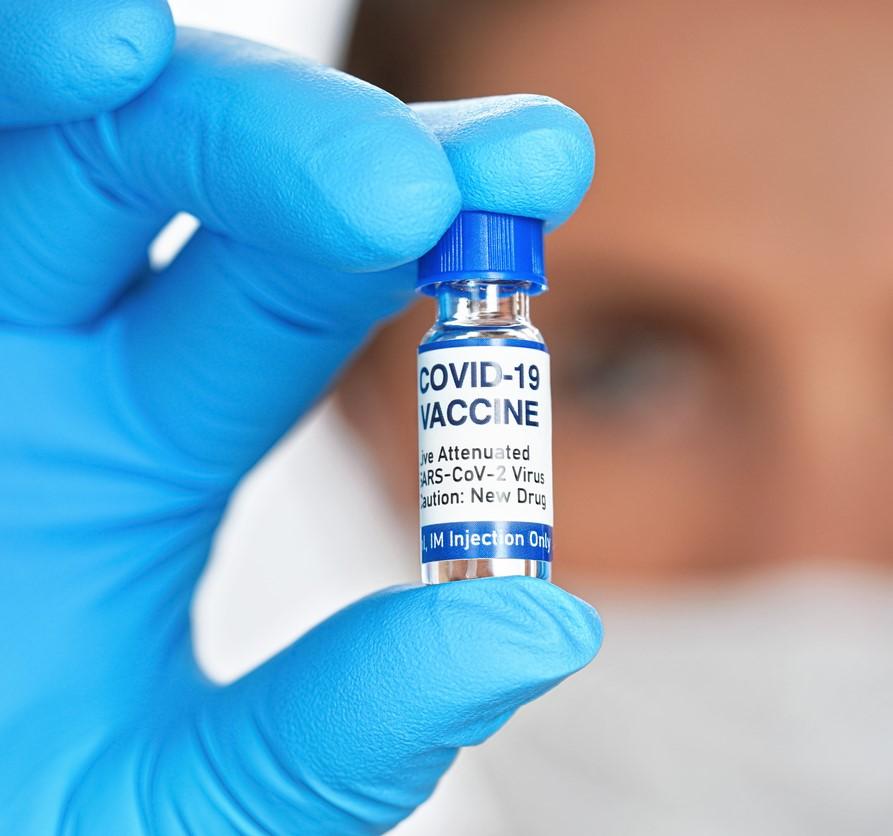Drug maker Moderna announced today that it will request an emergency use authorization (EUA) from the Food and Drug Administration (FDA) for its COVID-19 vaccine candidate, and the company's CEO hinted that distribution of the vaccine could begin by Christmas.
In a press release, company officials said that the FDA's Vaccines and Related Biological Products Advisory Committee (VRBPAC), which will make the final decision on authorization, will likely meet on Dec 17 to review safety and efficacy data on mRNA-1273—Moderna's messenger-RNA–based vaccine. If an EUA is granted, doses will be shipped out shortly thereafter, the company said.
Moderna also said it will submit an application for conditional marketing authorization from the European Medicines Agency, the body that regulates vaccines and therapeutics for the European Union.
Primary analysis shows 94% efficacy
The Moderna announcement was accompanied by a primary efficacy analysis of data from a phase 3 trial involving 30,000 participants, half of whom received mRNA-1273. The analysis found that the vaccine's efficacy against COVID-19 was 94.1%—just slightly lower than the 94.5% efficacy found in the first interim analysis announced on Nov 16.
The primary analysis was based on 196 COVID-19 cases in trial participants. Of those cases, 185 were observed in the group that received placebo, and 11 were in the vaccine group. Secondary end point analysis found 30 severe COVID-19 cases, all of which were in the placebo group. The efficacy of the vaccine was consistent across different age, gender, and racial and ethnic groups. No serious safety concerns were identified.
"This positive primary analysis confirms the ability of our vaccine to prevent COVID-19 disease with 94.1% efficacy and importantly, the ability to prevent severe COVID-19 disease," Moderna CEO Stéphane Bancel, MBA, said in the press release. "We believe that our vaccine will provide a new and powerful tool that may change the course of this pandemic and help prevent severe disease, hospitalizations and death."
In an interview this morning with CNBC, Bancel laid out a possible timeline for approval and distribution of the vaccine.
"It is highly possible, that between the 17th and Christmas, [that] the product is approved," Bancel said, noting that the FDA could issue an EUA within a few days of the VRBPAC meeting. "We'll be able to first ship products as soon as we get approval."
Moderna says that it expects to have approximately 20 million vaccine doses available by the end of 2020, enough for 10 million people to be immunized with the two-dose vaccine.
Pfizer and BioNTech have also requested an EUA for their two-dose vaccine candidate, and estimate they will have 50 million doses available globally by the end of the year. The FDA's VRBPAC is scheduled to review the Pfizer/BioNTech vaccine on Dec 10.
Vaccine allocation
With the potential for two COVID-19 vaccines to be available by mid-to-late December, the next question is who should be the first in line to get vaccinated. That will be on the agenda at tomorrow's emergency meeting of the Centers for Disease Control and Prevention's (CDC's) Advisory Committee on Immunization Practices (ACIP), a group of experts that makes recommendations to the agency on distribution of vaccines.
Last week, ACIP members indicated that healthcare workers and people in long-term care facilities (phase 1a) should be the first to be vaccinated, followed by essential workers (phase 1b) and adults with high-risk medical conditions and those over 65 (phase 1c). But the committee did not vote on those recommendations.
ACIP chair Jose Romero, MD, the chief medical officer for the Arkansas Department of Health, told CNN that the group is holding the emergency meeting and will vote on its recommendations tomorrow because it wants to make its advice public before the FDA issues an EUA for either, or both, of the vaccines.
"We foresee imminent authorization if this vaccine is shown to be effective and safe in the near future and we want to be at the point where we are providing appropriate guidance to the states and jurisdictions for the use of these vaccines," Romero said.
The initial doses of vaccine will only be enough to cover a fraction of the phase 1 population. There are an estimated 21 million healthcare workers in the United States, 3 million people in nursing homes, 87 million essential workers, 53 million adults over age 65, and more than 100 million people with high-risk conditions.
The chief science advisor for Operation Warp Speed, the federal government's effort to speed up development and delivery of COVID-19 vaccines and therapeutics, said last week that the government is prepared to send out the first 6.4 million doses to states within 24 hours of an EUA being granted. The doses will be distributed to states based on their populations, but state officials will decide how the doses are distributed.






















